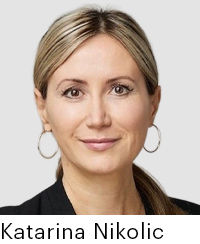Insurers are banking on artificial intelligence (AI) to quickly issue high insurance amounts, without medical exams or taking bodily fluids. This is called accelerated underwriting.
Among these insurers, BMO Insurance has recently been using AI to help advisors respond instantly to questions posed by a prospect. The insurer’s bot assists the advisor in what the insurer calls field underwriting.
Based on predictive analysis and the use of massive data, or megadata, accelerated underwriting is also known as automatic underwriting. It began to take hold in the Canadian industry in the previous decade. In 2017, insuring someone for one million dollars without an examination or sampling of bodily fluids would have been a feat.
Up to $5 million express
Today, some insurers are raising the limit on the amount of life insurance that can be underwritten through accelerated underwriting to as much as five million dollars.
However, according to data from InsuranceINTEL, Insurance Journal Publishing Group’s life and health insurance product information centre, only a handful of insurers have raised the insurance limit this high. Furthermore, this offering is limited to younger clients.
For participating whole life insurance, Manulife offers people aged 18 to 50 up to $5 million in coverage. Canada Life offers the same for people aged 18 to 45, and Sun Life for people aged 18 to 40.
For non-participating whole life insurance, BMO Insurance and Sun Life can offer up to $5 million in coverage for people aged 18 to 40.
For universal life insurance, Manulife offers up to $5 million in life insurance coverage for 18- to 50-year-olds. Canada Life does the same for people aged 18 to 45. Sun Life and BMO Insurance do the same for people aged 18 to 40.
For Term 100 insurance, BMO Insurance is the only company to offer a coverage amount of $5 million. The person must be between 18 and 40 years of age.
For Term 20 insurance, Manulife can insure people aged 18 to 50 for up to $5 million. BMO can insure people aged 18 to 40 with its Term 15, Term 20 and Term 30 products.
AI to manage expectations

In late 2024, BMO Insurance launched an AI-powered digital assistant integrated with Microsoft's Azure OpenAI service. Called Rovr AI, the assistant uses generative AI technology deployed in August 2024. The insurer offers this tool to advisors to make their work easier by quickly answering their customers' questions. The launch took place in stages.
In an interview with Insurance Portal shortly after the launch, Rohit Thomas, President and CEO, and Katarina Nikolic, Vice President and Chief Corporate Underwriter, BMO Insurance, explained that the assistant responds instantly to questions relayed to it by the advisor during the meeting with the customer. Among other things, the assistant scans documents to support its answers and provides links to them. The answer is then displayed on screen.
Rovr AI is a tool that is designed for point-of-sale prospecting - Katarina Nikolic
Thomas and Nikolic stressed that the tool does not make pricing decisions. That remains the prerogative of the company's underwriters. "Rovr AI is a tool designed for prospecting at the point of sale.... The tool can answer questions about medical and lifestyle history and all aspects of the field underwriting process. It synthesizes information in real-time, based on accurate and current documents available," explains Nikolic.

In this way, Rovr AI helps advisors to manage their customers' expectations in real time, answering their questions on the spot. "The advisor is often not aware what the underwriting decision would be. That could be an approval, a rating or a decline. What this external facing bot allows is for the advisor to be able to get early indication on what that underwriting decision may be,” she adds.
Nikolic illustrates with a fictitious case of a prospect who suffered a heart attack a year ago, making him uninsurable. “Instead of submitting an application to an insurance company only to find out they were a decline, the bot will be able to answer the underwriting decision upfront before that application is taken,” she explains.
She gave another hypothetical example: that of a 50-year-old prospect who has been diagnosed with type 2 diabetes for five years. Will he or she have to pay a higher premium for insurance? According to Health Canada, the body of a person with Type 2 diabetes produces insulin, but cannot use it properly.
Rovr AI will answer this question almost instantly, once it has scanned BMO Insurance's underwriting manual. The result: a man between the ages of 41 and 50 will be able to buy insurance at a regular rate; a woman in the same age bracket will have to pay a 150% surcharge. The robot's response will include a link to the underwriting manual, so that the advisor can find out what the situation is for other age groups.
Nikolic says that advisors spend hours poring over field underwriting manuals provided by insurance companies. "During this process advisors often don’t understand how the rating relates to the clients medical or lifestyle history. Rovr AI reduces wastage for unnecessary trial applications.," she says.
Scalable AI
We want to bridge that protection gap and ensure customers are protected - Rohit Thomas
Although not about accelerated underwriting, Rovr AI, says Rohit Thomas, addresses the issue of removing friction from the life insurance sales cycle. "We want to bridge that protection gap and ensure customers are protected and this is the sort of a tool that helps us get there, but I think it is also important to highlight it won't stop here. This continues to learn, evolve and improve.”
Nikolic added that as Rovr AI is a large language model (LLM), it will continue to learn and adapt to the volume and complexity of the questions it answers.
Gradual launch
In response to questions from Insurance Portal about the progress of the phased launch, Thomas and Nikolic revealed that as of March 24, all advisors with a distribution contract with BMO Insurance had “access to Rovr AI capabilities in both English and French.”
Nikolic added that Rovr AI can currently provide preliminary medical history and lifestyle assessments in both French and English. “We hope to expand our language capabilities in the future,” she added.
Rovr AI's phased launch began with 100 advisors on Dec. 9, 2024. "The second phase launched to 800 advisors on February 6, 2025. Our phased in approach was intended to solicit feedback from both internal and external stakeholders as well as iron out any bugs," explains Nikolic.
Users and statistics
Nikolic pointed out that the accuracy rate of LLM-type language models is typically between 70% and 80%. “Rovr AI has been able to hit a 90% accuracy on common high risk medical scenarios,” she reveals.
Rovr AI has been asked over 500 different medical and lifestyle questions by independent advisors and managing general agents. When asked what they liked the most about the assistant, advisors responded: real-time information and access to field underwriting information, use of natural language and industry terminology.
In terms of improvements, advisors are keen to capitalize on Rovr AI's capabilities in other areas such as claims, products and sales.
On-the-spot answers
During the interview, Thomas and Nikolic presented a demo of some examples of answers provided by the bot.
Rovr AI answered a question about e-cigarette use that the customer is considered a smoker, even without nicotine.
If the customer flies a private plane, the assistant will answer that additional pricing is required. It specified the factors on which the decision will depend:
- Total number of hours flown
- Any special ratings (e.g. Instrument Flight Rating IFR*)
- Number of hours flown in the last 12 months and expected for the next 12 months
- Type of flying being done
- Any history of accidents
- Any medical impairments
Rovr AI added that ratings will range from a standard rate to a flat extra of $10 per thousand dollars (of insurance amount), depending on experience and purpose of flying.
*The instrument flight rating is an authorization that allows an aircraft pilot to perform his duties in degraded weather conditions.
This article is a Magazine Supplement of the April issue of the Insurance Journal.







